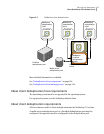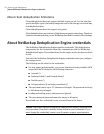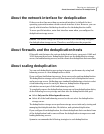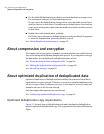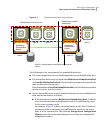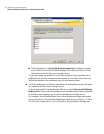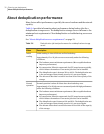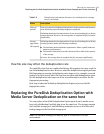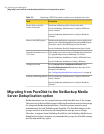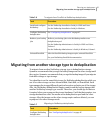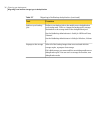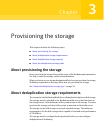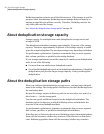
Table 2-4
Deduplication job load performance for a deduplication storage
server (continued)
DescriptionWhen
Cleanupiswhen theNetBackupDeduplicationEngineperformsmaintenance
such as deleting expired backup image data segments.
NetBackupmaintainsthesamenumberofconcurrentbackupjobsasduring
normaloperation.However,theaveragetimetocompletethejobsincreases
significantly.
Clean up
periods
NetBackupmaintainsthesamenumberofconcurrentbackupjobsasduring
normal operation under the following conditions:
■ The hardware meets minimum requirements. (More capable hardware
improves performance.)
■ Theamountof datathatisstored isbetween85%to90% ofthecapacity
of the storage.
However, the average time to complete the jobs increases significantly.
Storage
approaches
full capacity
How file size may affect the deduplication rate
The small file sizes that are combined with large file segment sizes may result in
lowinitial deduplicationrates. However,after the deduplication engine performs
file fingerprint processing, deduplication rates improve. For example, a second
backup of a client shortly after the first does not show high deduplication rates.
But the deduplication rate improves if the second backup occurs after the file
fingerprint processing.
How long it takes the NetBackup Deduplication Engine to process the file
fingerprints varies.
Replacing the PureDisk Deduplication Option with
Media Server Deduplication on the same host
You can replace a PureDisk Deduplication Option agent from its media server
host with a NetBackup PureDisk plug-in on the same host. The storage remains
the PureDisk storage pool, and NetBackup maintains access to all of the valid
backup images in the PureDisk storage pool.
Note: The PureDisk storage pool must be part of a PureDisk 6.6 or later
environment.
33Planning your deployment
Replacing the PureDisk Deduplication Option with Media Server Deduplication on the same host



